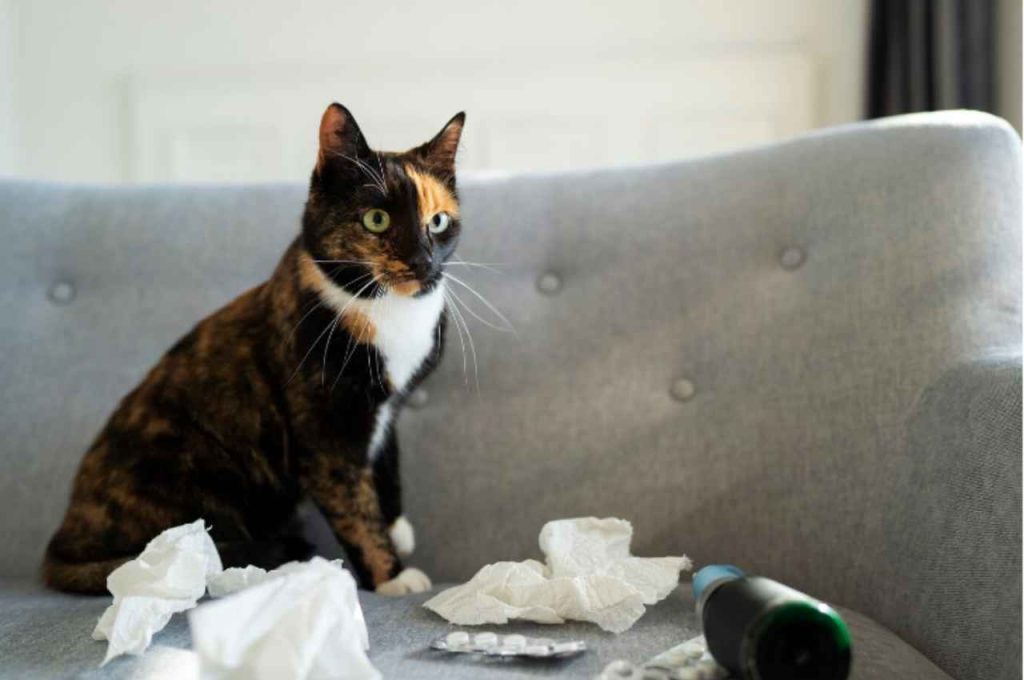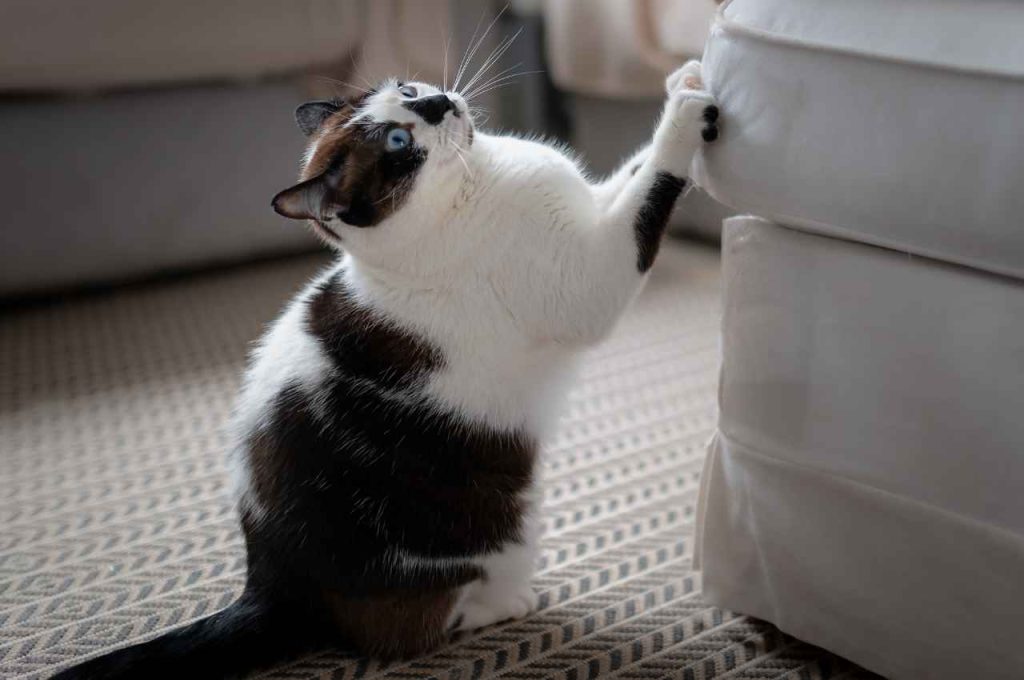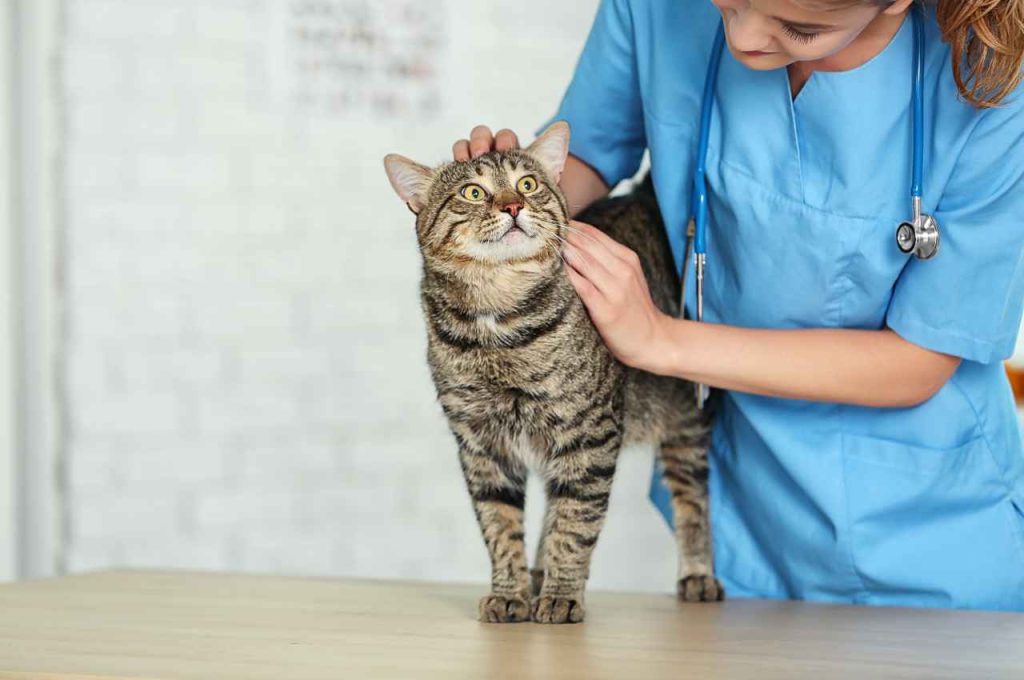To break a cat’s bad habits, provide alternative behaviors and positive reinforcement consistently. Redirecting their attention can be effective.
Having a cat with bad habits can be frustrating for pet owners. Whether it’s scratching furniture, biting, or eliminating outside the litter box, these behaviors can be challenging to address. However, with patience, consistency, and the right approach, it is possible to break your cat’s bad habits effectively.
By understanding the reasons behind their behavior and providing appropriate alternatives, you can encourage positive changes in your cat’s actions. This blog will explore some practical strategies to help you address and correct your cat’s undesirable habits, creating a harmonious environment for both you and your feline companion.
Identifying Common Cat Bad Habits
Identifying and breaking common bad habits in cats is essential for a happy and healthy pet-owner relationship. By understanding the root cause of the behavior and implementing positive reinforcement techniques, cat owners can effectively train their feline friends to break bad habits such as scratching furniture, jumping on counters, and refusing to use the litter box.

Scratching Furniture
Cat scratching furniture is often seen as a bad habit, but it’s a natural behavior. Cats scratch to mark territory, sharpen claws, and stretch. To prevent damage, provide scratching posts, pads, or cat trees. Regularly trim your cat’s claws and use deterrents like double-sided tape or sprays to protect your furniture.
Aggression Towards People or Other Animals
Cat aggression towards people or other animals can be a serious issue, but it’s often due to fear, stress, or territorial instincts. To manage this behavior, identify triggers and provide a safe, calm environment. Use positive reinforcement to encourage good behavior and consult a vet or behaviorist for additional support and strategies.
Understanding The Causes
Understanding the causes behind your cat’s bad habits is crucial to breaking them. By identifying the root causes, such as stress, boredom, or lack of proper training, you can implement effective strategies to address these issues and encourage positive behavior in your feline friend.
Understanding the Causes of Stress and Anxiety
Stress and anxiety can lead to disruptive behaviors in cats. Sudden changes, such as a new family member or a move to a new home, can trigger stress in cats. Loud noises, lack of routine, and even illness can also contribute to their anxiety.
Boredom and Lack of Stimulation
Cats are curious and active animals. When they lack mental and physical stimulation, they may develop destructive behaviors. Boredom can stem from a lack of interactive toys, limited playtime, or a monotonous environment. In addition, cats may exhibit bad habits due to territorial conflicts, poor litter box management, or health issues. Identifying the root cause is crucial in addressing and breaking your cat’s bad habits.
Preventive Measures
When it comes to preventing bad habits in cats, implementing preventive measures is key. By creating a stimulating environment and sticking to a regular playtime schedule, you can help deter unwanted behaviors.
Creating a Stimulating Environment
Ensure your cat has ample toys and scratching posts to keep them entertained. Rotate toys regularly to maintain their interest.
- Place cat trees by windows to provide visual stimulation.
- Set up hiding spots like boxes or tunnels for exploration.
Regular Playtime Schedule
Engage your cat in interactive play sessions daily. Use toys that mimic prey animals to satisfy their hunting instincts.
- Allocate specific times each day for play to establish a routine.
- Reward good behavior with treats to reinforce positive habits.
Behavioral Training Techniques
Discover effective behavioral training techniques to break your cat’s bad habits. With concise and practical approaches, learn how to address issues such as scratching furniture, litter box problems, and excessive meowing. Improve your cat’s behavior and create a harmonious environment in your home.
When it comes to breaking bad habits in cats, behavioral training techniques can be highly effective. By using positive reinforcement and maintaining consistency, you can help your furry friend overcome their undesirable behaviors. Let’s explore these techniques in more detail:
Positive Reinforcement
Positive reinforcement is a powerful tool in training cats. By rewarding your cat for good behavior, you are encouraging them to repeat those actions. This technique focuses on using treats, praise, and affection to reinforce positive actions and discourage negative behaviors.
Here are some key points to keep in mind when using positive reinforcement:
- Identify the desired behavior you want to encourage in your cat.
- Choose a reward that your cat finds enticing, such as their favorite treat.
- Immediately reward your cat when they exhibit the desired behavior.
- Offer verbal praise and affection along with the treat to reinforce the positive association.
- Consistently use positive reinforcement to reinforce the desired behavior over time.
Consistency is Key
Consistency plays a vital role in breaking bad habits in cats. Cats thrive on routine and predictability, so it’s essential to establish consistent rules and boundaries.

Here are some tips for maintaining consistency:
- Set clear rules and expectations for your cat’s behavior.
- Ensure that all family members or caregivers are on the same page and follow the established rules.
- Provide a consistent environment by keeping feeding, playtime, and sleep schedules regular.
- Use consistent cues or commands for desired behaviors.
- Reinforce positive behaviors consistently and avoid rewarding or encouraging negative behaviors.
By practicing positive reinforcement and maintaining consistency, you can help your cat break their bad habits and establish more desirable behaviors. Remember to be patient and persistent, as changing habits takes time and effort. With dedication and the right techniques, you can guide your cat towards a happier and healthier life.
Environmental Modifications
Modify your environment to break your cat’s bad habits. Use deterrents, provide alternatives, and create a cat-friendly space to encourage positive behavior.
Scratching Posts and Pads
Cats love to scratch, it’s a natural behavior that helps them stretch their muscles and keep their claws healthy. However, they may often choose furniture, walls, or carpets as their preferred scratching surfaces. To redirect their scratching habits, provide your cat with suitable alternatives such as scratching posts and pads. These should be sturdy, tall enough for your cat to fully stretch, and covered in a material that mimics the texture they prefer.
Place the scratching posts and pads in strategic locations throughout your home, near areas where your cat tends to scratch inappropriately. Encourage your cat to use them by applying catnip or using toys to play around the posts. This will help redirect their attention and protect your furniture.
Safe Spaces and Cat Trees
Creating safe spaces and providing cat trees can help address various behavioral issues in cats. Cats often need a place where they can retreat and feel secure, especially in multi-cat households or in homes with other pets or children. Safe spaces can be created by using cat beds, cozy blankets, or even cardboard boxes filled with soft bedding. Place these safe spaces in quiet areas where your cat can relax and have privacy.
Additionally, cat trees can provide vertical spaces for climbing, perching, and observing their surroundings. This not only fulfills their natural instinct to climb but also allows them to feel more in control of their environment. Ensure the cat tree is stable and has different levels or platforms for your cat to explore. By implementing these environmental modifications, you can help break your cat’s bad habits and promote a healthier and happier feline lifestyle. Remember to be patient and consistent in providing these alternatives, and always reward your cat for using them.
With time and positive reinforcement, you can effectively redirect their behaviors and create a harmonious living environment for both you and your furry friend.
Dealing with Aggression
To break a cat’s bad habits, addressing aggression is crucial. Use positive reinforcement to encourage good behavior and redirect aggressive tendencies with toys or scratching posts. Consistency and patience are key in dealing with aggression and helping your cat develop better habits.
Dealing with Aggression is one of the most challenging aspects of breaking a cat’s bad habits. Recognizing Warning Signs, Safe Handling Techniques, and Redirecting their Attention are some of the key strategies for dealing with aggressive behavior. To ensure the safety of both you and your cat, it’s important to follow proper handling techniques and understand the warning signs of aggressive behavior.
Recognizing Warning Signs
The first step in dealing with aggression is to recognize the warning signs. Some common warning signs include hissing, growling, flattened ears, arched back, and dilated pupils. If you notice any of these signs, it’s important to give your cat space and avoid handling them until they calm down. It’s also important to understand that cats may become aggressive due to fear, pain, or territorial behavior.
Safe Handling Techniques
When handling an aggressive cat, it’s important to prioritize safety. Always wear protective clothing, such as long sleeves and gloves, and approach the cat slowly and calmly. If the cat becomes aggressive, avoid using physical force and instead try to redirect their attention. If necessary, use a towel or blanket to gently wrap the cat and move them to a safe location.
Redirecting Their Attention
Redirecting your cat’s attention is a key strategy for dealing with aggressive behavior. This can be done by providing your cat with toys and other distractions, such as scratching posts or puzzle feeders. You can also try playing with your cat to release their energy and reduce their aggression. Additionally, providing your cat with a calm and comfortable environment can help reduce their stress and prevent aggressive behavior.
In conclusion, dealing with aggression in cats requires patience and understanding. By recognizing warning signs, following safe handling techniques, and redirecting your cat’s attention, you can help break their bad habits and create a happy and healthy relationship with your feline friend.
Consulting The Professionals
Consulting the Professionals is an essential step in addressing your cat’s bad habits. Sometimes, the behavior issues may be more complex and require the expertise of a veterinarian or a cat behaviorist. Knowing when to seek professional help is crucial in effectively managing your cat’s behavior.
When to See a Veterinarian
If your cat is exhibiting sudden or severe behavior changes, it’s important to consult with a veterinarian to rule out any underlying medical issues. Aggressive behavior, excessive vocalization, and sudden litter box aversion could be signs of an underlying health problem. A thorough physical examination and possibly some diagnostic tests can help determine if there are any medical reasons behind your cat’s behavior.
Working with a Cat Behaviorist
When dealing with persistent behavior problems such as aggression, anxiety, or compulsive disorders, seeking the expertise of a certified cat behaviorist can be highly beneficial. A behaviorist can assess your cat’s environment, behavior triggers, and interactions to develop a tailored behavior modification plan. They can also provide guidance on positive reinforcement techniques and environmental enrichment strategies to address your cat’s specific issues.
Maintaining Good Habits
When it comes to maintaining good habits in your cat, consistency is key. By sticking to a routine of health check-ups, continuous training, and reinforcement, you can effectively encourage positive behavior and discourage bad habits.

Routine Health Check-ups
Regular health check-ups are essential for maintaining your cat’s well-being and addressing any potential issues early on. Schedule annual veterinary visits for vaccinations, dental exams, and overall health assessments. This proactive approach can prevent health-related behavior problems and ensure your cat stays healthy and happy.
Continuous Training and Reinforcement
Consistent training and reinforcement are crucial for maintaining good habits in your cat. Utilize positive reinforcement techniques such as treats, praise, and play to encourage desired behaviors. Be patient and persistent, as it may take time for your cat to adopt new habits. Reinforce good behavior consistently to solidify positive habits and discourage negative ones.
Conclusion
To sum up, correcting your cat’s bad habits takes patience and consistency. By using positive reinforcement and redirection, you can effectively address issues. Remember, understanding your cat’s behavior is key to successful training. With these tips, you can foster a happy and well-behaved feline companion.
